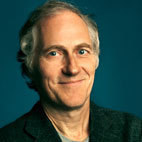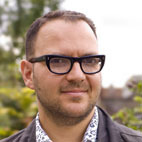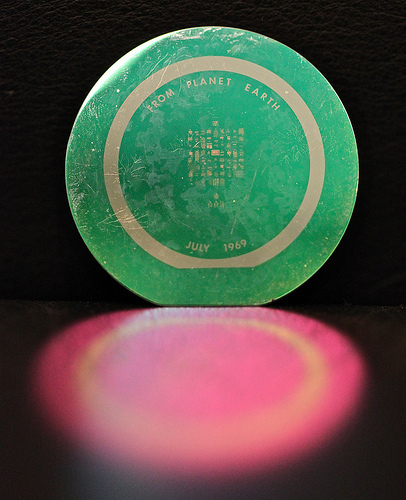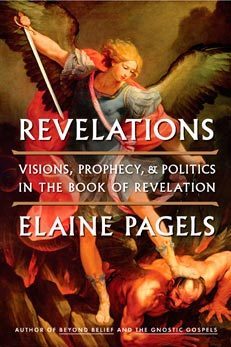Stewart Brand's Blog, page 85
August 14, 2012
India’s Living Bridges
In far North-Eastern India, the power of nature is not a limitation, but a resource. This video offers a glimpse at an old tradition, but one that’s very much alive – in more ways than one!
A form of “sustainable, living architecture that will live and grow for generations,” these living bridges are a testament to long term thinking. Indeed, they’re included in the list of Long Now Locations maintained by Atlas Obscura, who write:
The root bridges, some of which are over a hundred feet long, take ten to fifteen years to become fully functional, but they’re extraordinarily strong – strong enough that some of them can support the weight of fifty or more people at a time. In fact, because they are alive and still growing, the bridges actually gain strength over time – and some of the ancient root bridges used daily by the people of the villages around Cherrapunji may be well over 500 years old.
For more photographs of these living bridges, check out Atlas Obscura’s webpage!

August 10, 2012
Library of Water
 Long Now supporter Brian Suda writes in from Iceland to tell us about an art installation there that has collected water from 24 glaciers:
Long Now supporter Brian Suda writes in from Iceland to tell us about an art installation there that has collected water from 24 glaciers:
In the sleepy little town of Stykkishólmur, Iceland is a very interesting long-term project entitled “Vatnasafn” or “Library of Water”. The artist Roni Horn created an art installation in the old City Library in 02007. There are four parts to the exhibition, the beautiful building and view, the floor which is covered with weather terms in English and Icelandic, weather reports and finally the collection of water.
The library is a mesmerizing 24 volume collection of floor to ceiling water cylinders each containing water from one of the 24 glaciers of Iceland, including the now extinct Ok glacier).
When you enter the exhibit the towering columns of mostly clear water force you to think about these resources in a different way. We use water without even thinking, every time we wash our hands, take a shower or a bath, and cook our food. To put water on display in this way as a symbol or what we have and what we have lost makes for an interesting examination on our priorities.
Unlike a seed bank, we won’t be recreating that lost glacier from the water saved in this library. This is a collection that brings together nature from all across the Icelandic country into a single place. It shows how temporal nature and the weather can really be. With the worries of retreating and disappearing glaciers, to have a collection of a small slice of hydrological history is unique.
The website for the installation has a great map and a slideshow of where all the water came from.
Thanks, Brian!

August 9, 2012
The Apollo Goodwill Disc
On July 20, 01969, humans landed on the surface of the moon for the first time. But since only two of us got to go, NASA sent a message “FROM PLANET EARTH” in the rest of humanity’s stead. The message wasn’t a letter written in ink and paper, though. It was a thin silicon disc, with messages from various world leaders etched into its surface at a microscopic scale. On the recent anniversary of the Apollo 11 landing, Steve Jurvetson posted photographs of some Apollo 11 artifacts, including the Goodwill Disc. Jurvetson writes on his Flickr page:
The story of the rushed creation of the disc is fascinating, as are the messages embedded in this interplanetary time capsule.
The concept started in June, 1969, and it was a politically charged project, in the midst of the Cold War and the Vietnam War. On June 27, NASA telephoned the state department, and got the unprecedented permission to contact the foreign chiefs of state to deposit a message on the moon. This was 19 days before launch. They were asked to compose and send typed and scribed letters to the U.S. (they came by telegram and mail).
But NASA did not know how they would store the messages so that they could last thousands of years in the harsh temperatures, solar radiation, and cosmic rays on the lunar surface. So they approached the supplier of some of the most advanced technology on Apollo – the nascent semiconductor industry.
Sprague manufactured 53,000 components on the Apollo 11 spacecraft and many more for the ground support equipment. The engineers chose silicon for the storage medium because of the density of storage and the stability of silicon over temperature in a vacuum.
You can read the text of the goodwill messages on Wikipedia, as well as on the original 01969 NASA description, which also explains a bit about the fabrication method.
Forty years later, The Long Now Foundation’s Rosetta Disk uses remarkably similar technology to provide a durable record of the world’s human languages:
For the extreme longevity version of the Rosetta database, we have selected a new high density analog storage device as an alternative to the quick obsolescence and fast material decay rate of typical digital storage systems. This technology, developed by Los Alamos Laboratories and Norsam Technologies, can be thought of as a kind of next generation microfiche. However, as an analog storage system, it is far superior. A 2.8 inch diameter nickel disk can be etched at densities of 200,000 page images per disk, and the result is immune to water damage, able to withstand high temperatures, and unaffected by electromagnetic radiation. This makes it an ideal backup for a long-term text image archive. Also, since the encoding is a physical image (no 1′s or 0′s), there is no platform or format dependency, guaranteeing readability despite changes in digital operating systems, applications, and compression algorithms.
(via BoingBoing)

August 8, 2012
Tim O’Reilly Seminar Tickets
The Long Now Foundation’s monthly
Seminars About Long-term Thinking

Tim O’Reilly on “Birth of the Global Mind”
TICKETS
Wednesday September 5, 02012 at 7:30pm Cowell Theater at Fort Mason
Long Now Members can reserve 2 seats, join today! • General Tickets $10
About this Seminar:
“The history of civilization is a story of evolution in our ability to build complex ‘multicellular minds,‘” says Tim O’Reilly, founder and CEO of O’Reilly Media (books, conferences, foo camps, Maker Faires, Make magazine.)
Speech allowed us to communicate and coordinate. Writing allowed that coordination to span time and space. Twentieth century mass communications allowed shared information and culture to blanket the world. In the 21st century, memes spread mind to mind in nearly real time.
But that’s not all. In one breakthrough computer application after another, we see a new kind of man-machine symbiosis. The Google autonomous vehicle turns out not to be just a triumph of artificial intelligence algorithms. The car is guided by the cloud memory of roads driven before by human Google Streetview drivers augmented by powerful and precise new sensors. In the same way, crowd-sourced data from sensor-enabled humans is leading to smarter cities, breakthroughs in healthcare, and new economies.
The future belongs not to artificial intelligence, but to collective intelligence.

August 7, 2012
Elaine Pagels Seminar Primer
Monday August 20, 02012 at the Cowell Theater, San Francisco
Throughout her career as an historian and biblical scholar, Elaine Pagels has been piecing together the process by which many different writings inspired by someone named Jesus came to be singularly known as The Bible. By proxy, that process tells the story of how the disparate devotees of Jesus came to form a singular institution we know as the Christian church. In the centuries since, the interpretations of that book by that institution (or fragments of it), have heavily influenced history. Better understanding these parallel coalescences of text and tribe, as Pagels’s work has shown, can teach us about more than just some of the events of the first few centuries CE, but of balancing individual empowerment with group identity, the formation of orthodoxy, and the enduring power of a good story.
One of Pagels’ most popular books, Beyond Belief: The Secret Gospel of Thomas explores the cache of texts discovered near Nag Hammadi, Egypt in 1945. In it, she focuses on The Gospel of Thomas, which was written sometime between 40 and 140 CE. Of interest is the text’s interpretation of the salvation offered by following Jesus. Referencing a “light within each person,” this apocryphal gospel eschewed the “one true path” rhetoric that would eventually be incorporated into the official church doctrine for an Eastern-sounding individually achieved enlightenment. More recently, Pagels explored writings attributed to Judas that also didn’t make it into the doctrinal Bible and that similarly contradict official teaching. She discussed Reading Judas: The Gospel of Judas and the Shaping of Christianity with Stephen Colbert in 02007.
In her latest book, Revelations: Visions, Prophecy, and Politics in the Book of Revelation, Pagels turns her attention away from rejected and suppressed texts for one of the most popular and cinematic Biblical passages – The Book of Revelation. The historical record seems to indicate that it was written by John of Patmos to express the horror of the Roman army’s destruction of Jerusalem in 70 CE. The author couldn’t openly demonize such a dominant force, so he opted to retain some plausible deniability by writing in vague, symbolic terms. Pagels also contends that though John was a follower of Jesus, he still considered himself and Jesus’s teachings Jewish, and feared that the developing schism from the existing Jewish Church would lead to a violent reckoning.
Pagels explains in an interview with PBS that several centuries after its writing, in an ironic twist, Revelation’s powerful imagery was repurposed by a bishop named Athanasius to threaten those who would taint his vision of a pure, singular orthodox Christianity – just the thing it was originally written to discourage.
Elaine Pagels discusses the lives stories can lead beyond their writers’ imaginations and the particularly storied life Revelation has lived on August 20th at the Cowell Theater. You can reserve tickets, get directions and sign up for the podcast on the Seminar page.
Subscribe to the Seminars About Long-term Thinking podcast for more thought-provoking programs.

August 3, 2012
Cory Doctorow Seminar Media
 This lecture was presented as part of The Long Now Foundation’s monthly Seminars About Long-term Thinking.
This lecture was presented as part of The Long Now Foundation’s monthly Seminars About Long-term Thinking.
The Coming Century of War Against Your Computer
Tuesday July 31, 02012 – San Francisco
Audio is up on the Doctorow Seminar page, or you can subscribe to our podcast.
*********************
Who governs digital trust?- a summary by Stewart Brand
Doctorow framed the question this way: “Computers are everywhere. They are now something we put our whole bodies into—airplanes, cars—and something we put into our bodies—pacemakers, cochlear implants. They HAVE to be trustworthy.”
Sometimes humans are not so trustworthy, and programs may override you: “I can’t let you do that, Dave.” (Reference to the self-protective insane computer Hal in Kubrick’s film “2001.” That time the human was more trustworthy than the computer.) Who decides who can override whom?
The core issues for Doctorow come down to Human Rights versus Property Rights, Lockdown versus Certainty, and Owners versus mere Users.
Apple computers such as the iPhone are locked down—it lets you run only what Apple trusts. Android phones let you run only what you trust. Doctorow has changed his mind in favor of a foundational computer device called the “Trusted Platform Module” (TPM) which provides secure crypto, remote attestation, and sealed storage. He sees it as a crucial “nub of secure certainty” in your machine.
If it’s your machine, you rule it. It‘s a Human Right: your computer should not be overridable. And a Property Right: “you own what you buy, even if it what you do with it pisses off the vendor.” That’s clear when the Owner and the User are the same person. What about when they’re not?
There are systems where we really want the authorities to rule—airplanes, nuclear reactors, probably self-driving cars (“as a species we are terrible drivers.”) The firmware in those machines should be inviolable by users and outside attackers. But the power of Owners over Users can be deeply troubling, such as in matters of surveillance. There are powers that want full data on what Users are up to—governments, companies, schools, parents. Behind your company computer is the IT department and the people they report to. They want to know all about your email and your web activities, and there is reason for that. But we need to contemplate the “total and terrifying power of Owners over Users.”
Recognizing that we are necessarily transitory Users of many systems, such as everything involving Cloud computing or storage, Doctorow favors keeping your own box with its own processors and storage. He strongly favors the democratization and wide distribution of expertise. As a Fellow of the Electronic Frontier Foundation (who co-sponsored the talk) he supports public defense of freedom in every sort of digital rights issue.
“The potential for abuse in the computer world is large,” Doctorow concluded. “It will keep getting larger.”
Subscribe to our Seminar email list for updates and summaries.

July 27, 2012
Solving the Pioneer Anomaly With Magnetic Tapes and Punch Cards
You may dream of freaky new physics, but sometimes freaky old physics is all you need. (New York Times)
Slava G. Turyshev, an expert on gravity at NASA’s Jet Propulsion Laboratory, recently proved that the tried and true theories of Einsteinian physics are as powerful as ever – and he used technology from the 01970s to do it.
In 02004, Turyshev began working on a conundrum that had confused physicists since the early 01980s: Pioneer 10 and 11, two space probes gradually making their way to the outer reaches of the solar system, were slowing down at a higher rate than had been expected. At first, scientists dismissed the observation as the inconsequential effect of propellant left over in the probes’ fuel lines. But when the phenomenon persisted well into the nineties, the lack of a good explanation became a problem. Could it be that Einstein’s theory of General Relativity was off? Were the Pioneer probes perhaps showing us that gravity works differently when you’re measuring distances of a cosmic scale?
Turyshev decided to investigate, but ran into a problem: the last time either of the Pioneers had communicated with Earth was in 2003. Without any new data to rely on, Turyshev undertook what he calls a bit of “space archaeology:”
At the time these two Pioneers were launched [in the early 1970s], data were still being stored on punch cards. But Turyshev and colleagues were able to copy digitized files from the computer of JPL navigators who have helped steer the Pioneer spacecraft since the 1970s. They also found over a dozen of boxes of magnetic tapes stored under a staircase at JPL and received files from the National Space Science Data Center at NASA Goddard Space Flight Center, Greenbelt, Md., and worked with NASA Ames Research Center, Moffett Field, Calif., to save some of their boxes of magnetic optical tapes. He collected more than 43 gigabytes of data, which may not seem like a lot now, but is quite a lot of data for the 1970s. He also managed to save a vintage tape machine that was about to be discarded, so he could play the magnetic tapes. (jpl.nasa.gov)
The vintage tape machine allowed Turyshev to read the old data; with help from a software programmer, he was also able to clean up and digitize it all for future safekeeping. And after several years of analysis, Turyshev was able to show that it might not quite be time for a new theory of gravity after all. The observed effect, he argues, has to do with the specific ways in which the Pioneers were built. The heat put out by the probes’ electrical systems radiate out in one particular direction – the direction of travel. This radiation pushes up against the forward momentum of the probes, thereby slowing them down ever so slightly.
“The effect is something like when you’re driving a car and the photons from your headlights are pushing you backward. It is very subtle.” (Centauri Dreams)
These findings not only demonstrate that Einstein wasn’t wrong about gravity; they also prove another aspect of General Relativity: that light (of which heat radiation is a form, as the New York Times explains) can be thought of as a stream of tiny particles (photons), which can carry energy and momentum. This realization will help NASA engineers build more efficient probes in the future.
Turyshev and his colleagues have published their findings in a paper, which can be found here. Though Turyshev is perhaps slightly disappointed not to have discovered a new physics of gravity, his findings do teach us something valuable: that old data is by no means obsolete – and that old theories can still teach us new things.

July 24, 2012
Rosetta, A Documentary by Scott Oller
The Rosetta Project was created to begin the work of filling Long Now’s 10,000 Year Library and in 02011 filmmaker Scott Oller offered to help tell the story of the project’s aspirations and achievements. This short documentary was shot over the course of several weeks in the Spring of 02012 and explores the contents of the Rosetta Project’s collection of linguistic data, the Internet Archive’s role in hosting and making accessible that data, and the aesthetics and functionality of the Rosetta Disk itself.

July 23, 2012
Remembering our Right to Remember
In 01994, The Economist first launched its very own website. Before long, America Online pronounced it one of the world’s best news sites, and numerous readers depended on it for their updates on current events.
Yet 18 years later, this once valued page is nowhere to be found. (The Wayback Machine’s records only go back to the end of 1996.) Long forgotten, it died a quiet death on a buried floppy disk somewhere, while the world, and The Economist, moved on to bigger and better internet capabilities.
How sad, The Economist’s Babbage blog writes, that we’ve lost so much of this early internet content. And how dangerous, as well. The threat of a digital dark age doesn’t just lurk in the ever-increasing pace of technological innovation, and its growing waste pile of obsolete software platforms. Perhaps even more acutely, it looms also in our own lack of awareness. Amidst the sheer volume of data that we swim through on the internet these days, we simply have no room or time to think about everything we’ve lost. Babbage writes:
The explosive growth of internet services such as e-mail, music downloads, video streaming, internet television, and, above all, the web itself, with its multitude of applications, has overwhelmed the digital world’s capacity to reflect upon what has passed before.
This deluge of data and applications has drowned out our “right to remember,” the author writes. Driven toward each day’s new buffet of information and possibilities, we simply have no time to look back. It’s all we can do to swallow our losses and keep on swimming. Babbage quotes both Stewart Brand and Danny Hillis in calling attention to the consequences of such a collective loss of memory:
There has been so little time to remember, let alone record, the past for posterity. Rapid turnover of information has made total loss the norm. It has been simply a matter of delete, clean the hard-drives and prepare for tomorrow’s deluge. “Civilization is developing severe amnesia as a result,” says Stewart Brand of the Long Now Foundation. Danny Hillis, a pioneer of parallel computing and machine intelligence, fears the world has become stuck in a digital dark age, with few cultural artifacts from its digital past to point the way.
Babbage sees a hopeful solution in organizations and people who engage in digital preservation efforts – such as Brewster Kahle, whose Wayback Machine documents the history of web pages, and whose Internet Archive is creating a library of everything ever posted to the web. But the ultimate key to counteracting our collective amnesia, the article suggests, is the availability of open source archives: collections that not only preserve information, but also make it accessible to the public.
… without paper libraries, people would find it hard to exercise their “right to remember.” That means, for example, journalists would find it difficult to hold politicians accountable for what they had promised. Historians would have trouble holding a mirror up to a society to show its vulnerabilities as well as its strengths. As much of public information is moving from printed to digital form, it is vital that virtual libraries archive as much of these digital media as they can for future reference and accountability.
Hopefully, the public availability of information will remind us how important it is to remember – and to be, collectively, accountable to future generations.

July 20, 2012
Beehives and long-term thinking
At the Harvard Business Review, Michael O’Malley describes some of the things he’s learned from his chosen hobby of beekeeping. By day, O’Malley is a consultant for large businesses trying to understand how recruiting, compensation, and training policies affect their employees’ choices (and how that affects the company as a whole). He points out that bees are highly adept organizational risk managers and that a focus on the long-term is a strength they’ve leveraged for “100 million years of productivity and growth.”
No queen bee is under pressure for quarterly pollen and nectar targets. The hive is only beholden to the long term. Indeed, beehives appear to underperform at times because they could collect more. But they are not designed to maximize current returns; they are designed to prevent cycles of feast and famine (a death sentence in the natural world). They concentrate their foraging on the most lucrative patches but keep an exploratory force in the field that will ensure future revenue sources when the current ones run dry. This exploratory force (call it an R&D expenditure) increases as conditions worsen.
They also avoid getting “too big to fail,” utilize distributed authority for quick decision-making, and try to make intelligent mistakes (if any).
(Via Kottke)

Stewart Brand's Blog
- Stewart Brand's profile
- 291 followers











